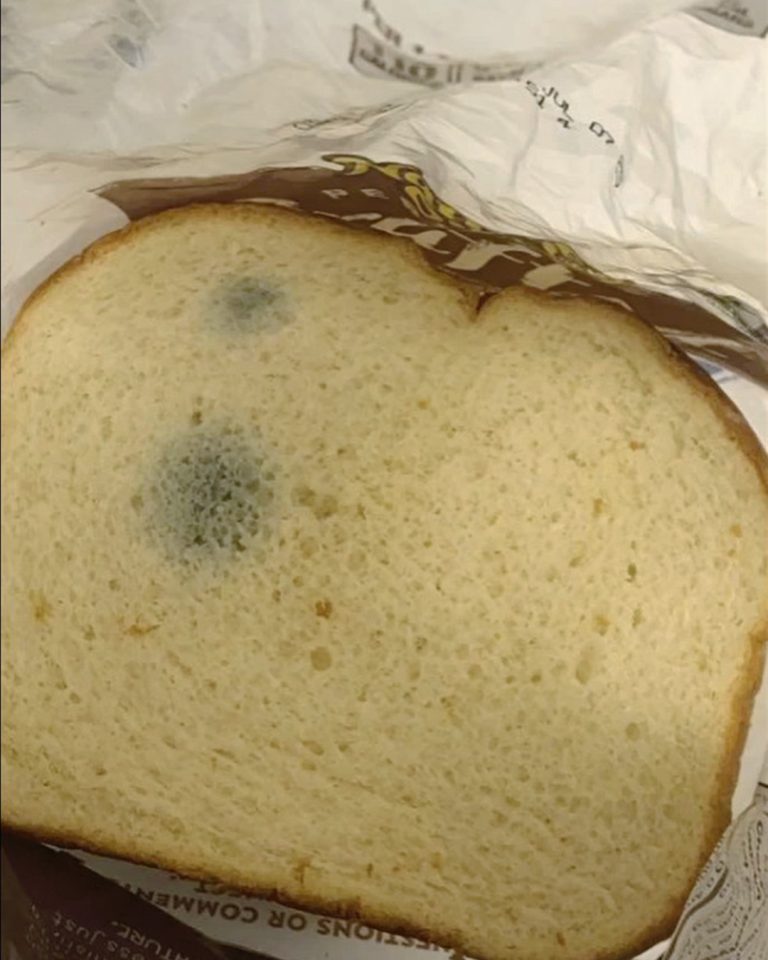We've all experienced that moment: a piece of baguette forgotten at the bottom of the cupboard, now as hard as a rock. But before you toss it in the trash, a question arises: is it simply stale or already unfit for consumption? The answer isn't always as obvious as you might think... And yet, knowing the difference could save your dinner—and your wallet!
What Mold on Your Bread Really Reveals
In the photo above, there's no doubt about it: this loaf of bread has gone beyond simple staleness. The blue-green spots visible on the surface are typical of microscopic mold that infiltrates the entire crumb, far beyond what the human eye can perceive. Unlike a bloomy-rind cheese, this type of bread cannot be scratched: its spongy texture makes it an ideal breeding ground for invisible fungi. In other words, even if you remove the affected area, the rest is potentially contaminated. It's therefore best to avoid any attempt to save the bread and throw it away immediately – for your health and that of your loved ones.
And what about stale bread?
No, just because it's dry doesn't mean it's good to throw away! Stale bread is a completely natural phenomenon. It's not a sign of deterioration but rather a simple change in texture. Specifically, it's the starch in the crumb that, by losing its moisture and "recrystallizing," makes the bread firmer. The result: goodbye soft, hello crunchy.
But don't panic, stale bread isn't dangerous to your health – as long as it doesn't have mold. And good news: it can still enhance your dishes!
Quick tip: how to refresh stale bread?
An impromptu dinner party? Surprise guests? Your bread from yesterday can become crispy again in the blink of an eye. Simply wrap it in aluminum foil and place it in an oven preheated to 175°C (fan-assisted) for 10 to 15 minutes. The steam created in the crust will restore its softness, almost as if it had just come from the bakery. A very effective tip – and zero waste!
And if you have a toaster, don't hesitate to slip some slices of stale bread inside. They'll be perfect with soup, a cheese platter, or even a delicious breakfast.
What to do with stale bread? Our delicious ideas
If bread is too dry to eat as is, it becomes a wonderful base for many easy and tasty recipes. Here are a few that will make you want to store your leftovers!
French toast: A timeless classic. Dipped in a mixture of eggs, milk, and sugar, then browned in a pan… it's the quintessential childhood snack. Bread pudding: A more generous version of French toast, baked with dried fruit, chocolate, or vanilla.
Panzanella: This Italian salad combines tomatoes, onions, cucumbers, and stale bread soaked in vinegar. Fresh and perfect for summer!
Homemade breadcrumbs: Blend your stale bread and store it in an airtight glass jar. Perfect for coating your cutlets or gratinating your dishes.
Croutons: Diced, lightly oiled, and baked, they will add a little pep to your soups and salads.
Mold: The real danger to watch out for
If you spot a suspicious green, blue, or even white stain... there's no doubt about it: it's time to say goodbye to your bread. Unlike aged cheese, moldy bread can't be scratched. Why? Because its porous texture allows mold to grow deep, far beyond what you can see.
And it's not just a matter of taste! Eating moldy bread can expose you to substances called mycotoxins, which are potentially harmful. While the risks vary depending on individual sensitivity, it's best to avoid all contact, especially for children or vulnerable individuals.
So, the golden rule: if you have the slightest doubt, throw it out!
With a little cleverness and a good dose of creativity, stale bread can become a star in the kitchen again—as long as it's still healthy and free of mold.
